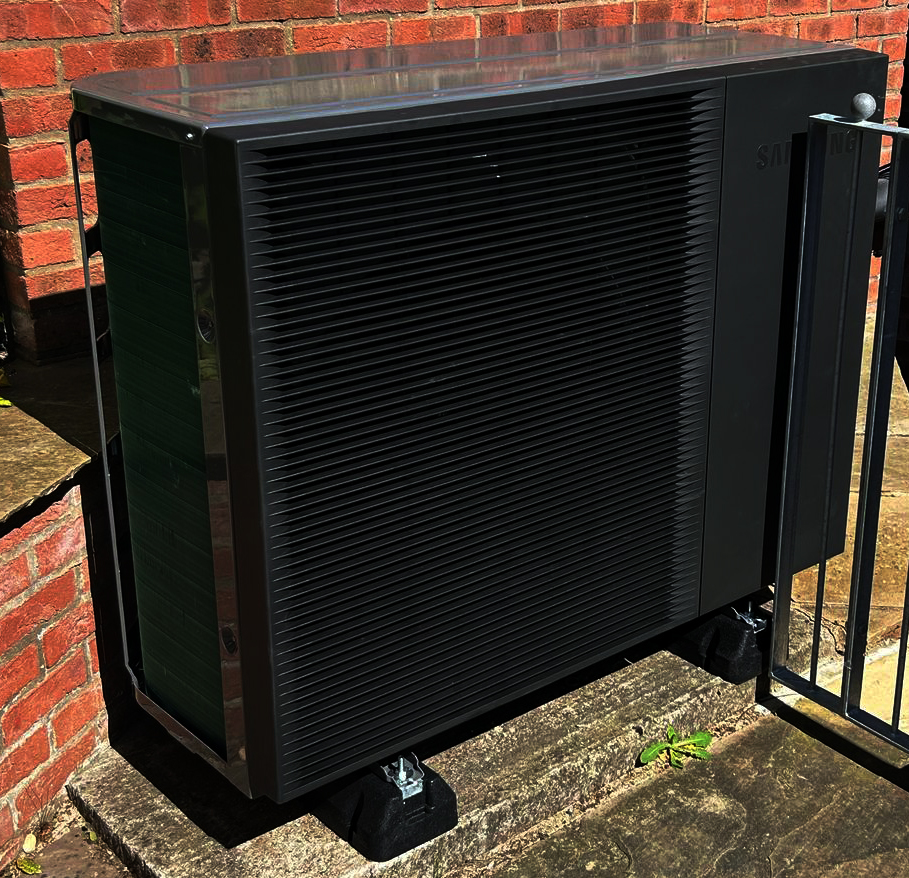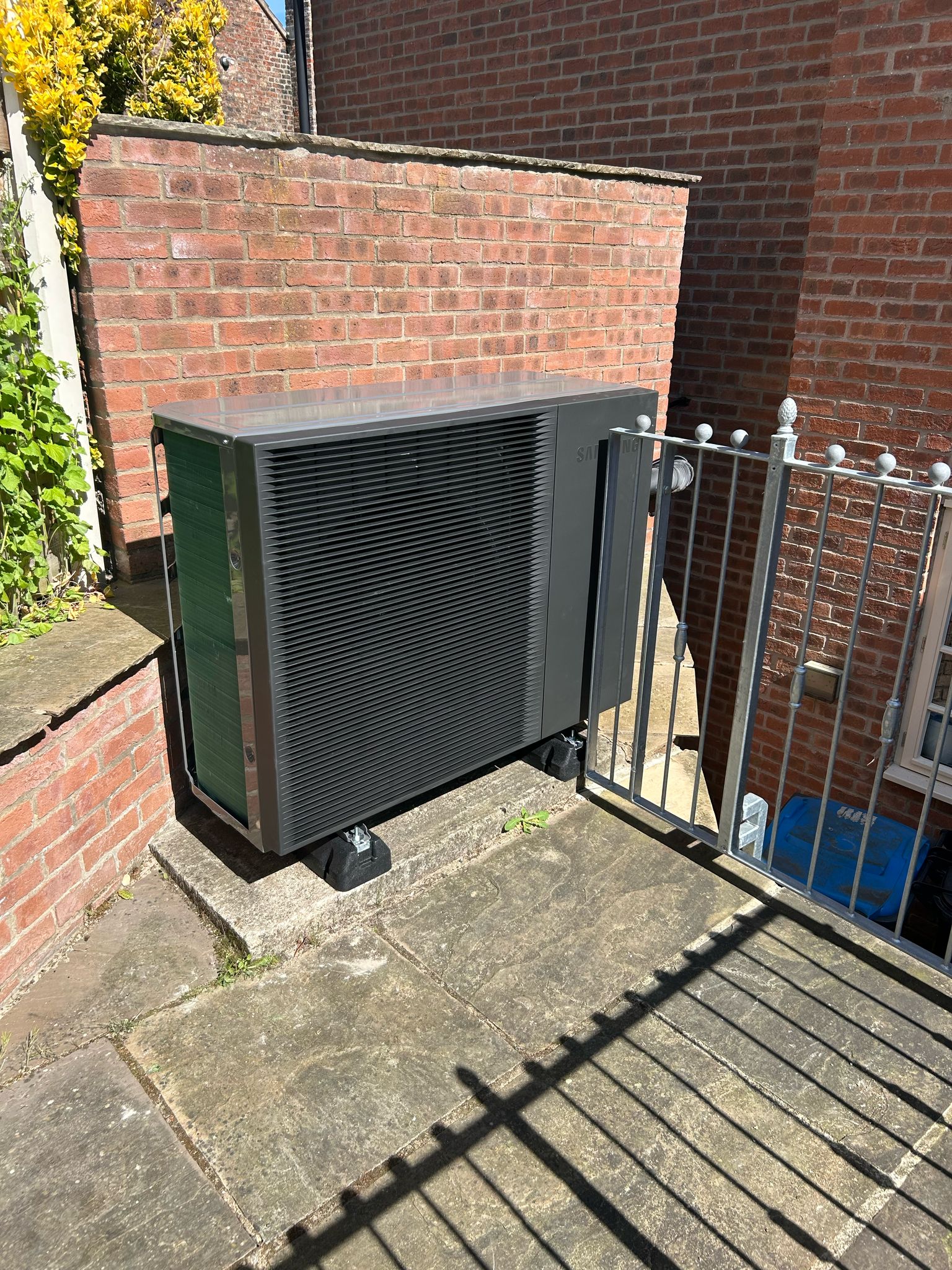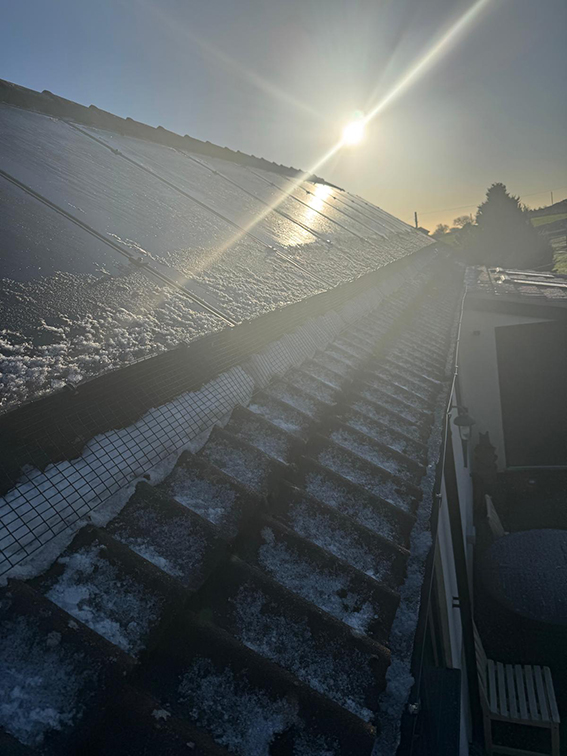
The Truth About Running Costs of Air Source Heat Pumps
There are many articles on the internet, and in the printed press, about how heat pumps are either a rip off, the best thing since sliced bread or another ‘meh’ idea to heat the home.
But, the truth of the matter is they are legitimate alternatives to gas or electric boilers.
Now, that doesn’t mean they are amazing for every home, or that they are going revolutionise the energy sector, it just means you should definitely look at the pros and cons next time you need to replace your boiler.
In this blog, we’re going to investigate what an air source heat pumps (ASHP) is, and how much they really cost to run.
What Are Air Source Heat Pumps and How Do They Work?
Air source heat pumps, or any heat pump, are greener alternatives to fossil fuel boilers – and they work in a similar way to an air conditioning unit.
Basically speaking, a fan on the exterior of your home draws in air and uses it to heat water in your central heating system.
While that sounds like magic, the science behind it is very easy to explain.
The air is used to heat up a refrigerant inside the system – that refrigerant is then put under huge pressure to heat it up even further.
The use of the heat is much more efficient in an air source heat pump than it is in a gas or oil boiler, some easily achieve 400% efficiency.
This means that for every unit of electricity they consume, they can deliver up to four units of heat.
To compare that, gas boilers are 90% efficient – although gas is much cheaper than electricity.
Breaking Down the True Running Costs
How does that efficiency translate to cold, hard cash?
Well, if you were to believe the noise in the media, air source heat pumps are going to haemorrhage money – but that’s just not true.
So, how do we come up with the correct number?
Well, let’s say electricity costs 25.73p per kWh per kWh and gas is 6.33 - that’s the cap in July 2025 - and the average home uses 12,000 kWh for heating every year according to Ofgem.
We’ll also work on a conservative estimate of an air source heat pump being 300% efficient, some are 400 but we’ll err on the side of caution, and gas boilers are 90%, which is the top end of the market.
So an average air source heat pump will cost you around £1020 to heat your home per year, while a top of the range gas boiler will cost £844 per year.
A good quality ASHP, like the Samsungs UK Energi provide, costs £771 per year using those numbers – so it’s a really good idea to research the ASHP you are fitting.
An average gas boiler, functioning at 80% efficiency will cost just over £1000 a year to run.
Factors That Impact Your Heat Pump’s Efficiency
Air source heat pumps aren’t for every home, but they can be used in older properties despite what you hear online.
A reputable company will always do a Heat Loss Calculation on your home before recommending an air source heat pump – so make sure you look out for that when your are researching.
The most obvious way your heat pump’s efficiency can be affected is by the temperature outside.
The cooler it is, the more work the system has to do.
The 400% efficiency is an average in the UK, so that will fluctuate in winter and summer, but as the UK’s weather is fairy ‘mild’ – we know it doesn’t seem it sometimes – the outside temperature isn’t too big of a worry.
The insulation of your home is an important factor, but that will have been worked out during the Heat Loss Calculation, so the efficiency of your ASHP will only be affected if you leave doors and windows open, or something happens in the loft to ‘de-insulate’ the place.
The health of the radiators in the house is very important when it comes to ASHPs too, so regular checking for ‘cold spots’ and ensuring the whole system is clean and functioning is recommended.
Apart from that, just ensuring the whole system is clean, well maintained and functioning correctly will keep your ASHP running at optimum levels.
How Weather and Climate Affect Performance
The heat outside the house will affect the efficiency of your heat pump, but that will not affect the temperature in your home.
Meaning it costs more to run your heat pump in winter, which you would expect as you use any boiler more in the winter.
The Energy Saving Trust and UK Department for Business, Energy & Industrial Strategy (BEIS), conducted a study in Scotland that evaluated the performance of ASHPs in areas where the temperature regularly drops to -5°C or lower.
The main thing they found was air source heat pumps (ASHPs) will still achieve an efficiency rating of between 250 and 300%.
The Swedes did their own study, bearing in mind those Scandis often have to endure temperatures of below -15°C, and ASHPs were still managing to heat homes to as very comfortable 20°C without a huge increase in energy consumption.
The Scottish study also found that ASHPs offered substantial savings as compared to traditional heating.
Participants reported an average 20-30% saving when compared to their previous heating systems, which were predominantly oil or gas boilers.
The Energy Saving Trust in the UK claim that that homes with air source heat pumps can save up to £500 annually compared to electric resistance heating.
The Role of Insulation in Cost Savings
Insulation is incredibly important when fitting an air source heat pump – well, it’s important no matter what you use to heat your home, but ASHP can be severely limited if you don’t have a well-insulated home.
The Heat Loss Calculation will determine whether your home is suitable, but you need to maintain good insulation all year round to ensure you’re not disadvantaging your heat pump.
The thing about heat pumps is they don’t kick out huge amounts of heat, but the heat they do produce is used very efficiently.
Meaning, if you leave the doors and windows open, then try to use the heat pump to quickly heat your home, that’s just not going to happen as they work by maintaining a constant temperature through efficient use of their energy.
Maintenance Costs: What to Expect
Manufacturers recommend servicing your air source heat pump at least once a year., much like you would with any boiler system.
This service focuses on the heat pump mechanisms themselves, rather than the full heating system.
So ensuring the parts are working, the refrigerant is topped, the fan is working well, etc.
An annual cost can be between £100 and £300 a year, but your installer may also offer a maintenance package in their installation cost.
Government Grants and Incentives That Lower Costs
This is where we tell you about the BUS or Boiler Upgrade Scheme.
The UK government launched an initiative in England and Wales to help people upgrade their boilers to a more efficient, greener technology.
This means that homeowners in England and Wales can get £7500 toward any upgrade that is considered ‘renewable’ energy.
That, of course, includes air source heat pumps.
This significantly reduces the cost of installing and maintaining your new heating system.
There are other grants available, like ECO4 and LAX but these are more generalised grants for green tech in the home.
Are Air Source Heat Pumps Worth It in the Long Run?
Absolutely air source heat pumps are worth it in the log run.
They cost a very similar amount to run as gas boilers, which will soon be unavailable, and they are much better for the future of the planet.
As well as being greener, and excellent value for money, they will help us to reevaluate how we insulate and maintain our homes, which is good for everyone!


